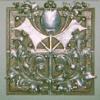
Note: While authors are asked to place warnings on their stories for some moderated content, everyone has different thresholds, and it is your responsibility as a reader to avoid stories or stop reading if something bothers you.
The Great Mirror of Same-Sex Love - Prose - 88. Robin Jarvis Brownlie "Masahai Amatkwisai" a Two Spirit Point of View
.
Masahai Amatkwisai –
a Two Spirit Point of View
MASAHAI Amatkwisai (b. 1850s?; d. 1890s), healer, hwame:.
Masahai Amatkwisai, also known as Sahaykwisa, was a Mohave healer and hwame: (a female with an alternative gender status) who lived in the late nineteenth century. Masahai specialized in treating venereal diseases, a common specialty for hwame: healers and a sign of great spiritual power. He was highly successful in hunting and planting, as well as in his work as a doctor, and was wealthy by Mohave standards. Masahai took several wives, all of whom eventually left him. At the age of about twenty-five, he was raped and underwent an identity crisis. He started to drink heavily and apparently reverted to a female gender identity. After this, Masahai increasingly behaved in ways that, within Mohave culture, marked [Masahai] as a witch who used spiritual powers to harm others. [Masahai] was drowned by two male lovers in the 1890s, at about forty-five years of age.
The Mohave formerly resided along the Colorado River, cultivating crops and hunting, in an area that now includes parts of California, Arizona, and Nevada. When Masahai was a child, much of the tribe was placed on the Colorado River Reservation in west central Arizona, but his family remained at Fort Mohave with a conservative Mohave group. He belonged to a large, prominent, and highly respected family of the Huttoh branch of Mohave. No information has been preserved about Masahai’s childhood. When he reached adulthood, he looked feminine and had developed breasts, but is said newer to have menstruated. His society regarded him as a hwame: and twentieth-century Mohave referred to him in English with the male pronoun. His full name was a man’s name, Masahai Matkwisa Manye:, meaning “Alluring Young Girl Who is Pleasing.” It was designed to increase luck in attracting women. As was typical for Mohave healers, he gained his power to cure sexual diseases through dreams. The same power was believed to make him lucky in love; a trait that was assigned to hwame: in general.
Masahai had at least three wives during his young adulthood, when he was fully identified with the hwame: status. All the wives endured relentless teasing, a standard Mohave practice with the spouses of cross-gender individuals. The first two wives left Masahai in part because the taunting became unbearable for them. But Masahai found another wife each time, being known as a good provider who ensured that his wives were well-dressed. When searching for a new wife, Masahai went to dances where he joined the men outside and exhibited typical Mohave male behavior such as flirting with women and talking explicitly about his former wife’s body.
When his second wife left, a disappointed Masahai painted his face like a warrior. But instead of going to his rival’s camp, he went to another woman’s lodge and began to woo her, highlighting his skill as a hunter. On his third visit, the woman agreed to leave her husband and elope with Masahai. But this last wife returned to her husband. Masahai repeatedly stood at the edge of their camp in a manner that implied intent to bewitch someone. After several such visits, the husband ambushed him in the woods and raped him.
After the rape, Masahai began to drink heavily and turned to prostitution, an occupation in which he had occasionally engaged before. He began to desire men, although the Mohave believed that he was also having sex in his dreams with the ghosts of women he had previously bewitched. Masahai was now perceived as a full-fledged witch. His end came when he boasted to his two current lovers, Suhura:ye and Ilykutcemidho:, about having killed Suhura:ye’s father by witchcraft. The two men then threw him in the Colorado River to drown. This occurred in the 1890s, when Masahai was in his mid-forties. The Mohave believed that witches deserved death, but also that they wished to be killed, as only murder would allow their souls to join bewitched lovers in the afterlife. Masahai’s boasting behavior was seen as an attempt to goad others into killing him.
Masahai Amatkwisai lived in a time of great stress for the Mohave people as they coped with U.S. expansion into their territory. He conformed to his society’s expectations for a hwame: and healer, but apparently concluded that his position as hwame: had become untenable. Although Mohave culture provided an institutionalized alternative gender role for women, Masahai was ridiculed and insulted behind his back, suggesting that acceptance of hwame: status was declining in his time. Family descendants say that he “tired of this life” (Roscoe, p. 97), because he had captured so many souls through his shamanism, and was ready to die.
Bibliography
Blackwood, Evelyn. “Sexuality [sic] and Gender in Certain Native American Tribes: The Case of Cross-Gender Females.” Signs: Journal of Women in Culture and Society 10 (1984): ps. 1-42. […]
Lang, Sabine. “Men as Women; Women as Men: Changing Gender in Native American Cultures”, translated from the German by John L. Vantine. Austin: University of Texas Press, 1998.
Roscoe, Will. “Changing Ones: Third and Fourth Genders in Native North America” New York: St Martin’s Press, 1998.
—Robin Jarvis Brownlie,
2005
_
-
 3
3
Note: While authors are asked to place warnings on their stories for some moderated content, everyone has different thresholds, and it is your responsibility as a reader to avoid stories or stop reading if something bothers you.
Recommended Comments
Chapter Comments
-
Newsletter
Sign UpSign Up and get an occasional Newsletter. Fill out your profile with favorite genres and say yes to genre news to get the monthly update for your favorite genres.


